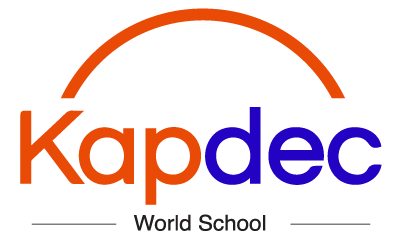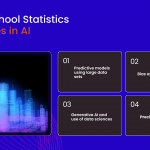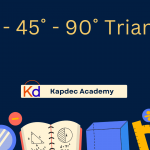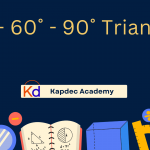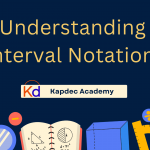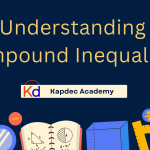For many people, the term quantum computing might sound a bit intimidating or even mysterious. And that’s totally okay — it’s a new and rapidly growing field! For high school students just starting to explore programming or diving into STEM subjects, understanding the basics of quantum computing can open the door to an exciting world of innovation and discovery.
Experts predict that by 2030, quantum computers could outperform the traditional computers we use today. That’s why governments, universities, and industries are already investing heavily in this technology — and in building a “quantum-ready” workforce. Even though most high schools don’t yet teach quantum topics, that’s starting to change.
For example, Ohio recently added quantum computing to its K–12 computer science curriculum. In Texas, educators are working to make basic quantum topics part of every student’s learning path. The University of Texas at Austin even launched the first full-year high school quantum computing course that counts toward graduation.
If you’re a student thinking about a future in STEM, now is the perfect time to explore this field. Learning quantum concepts early gives you a real advantage — especially if you already enjoy math or computer science. In this article, we’ll break down the key ideas behind quantum computing in a simple, relatable way. You’ll see how these concepts connect to what you’re already learning and discover programs designed just for high school students like you.
Math, Physics, and Basic Computer Science: Your Starting Points
Where do I start? What should I learn differently? Isn’t what I’m studying in high school enough? Do I have to be perfect at everything?
These are the questions that pop into every student’s mind the moment they hear the words Quantum Computing.
Here’s the good news — you don’t need to know everything! The secret to getting started lies in building a strong foundation. Focus on sharpening your understanding of math, physics, and computer science. These three subjects are your launchpad into the world of quantum computing. Once you’re confident in the basics, you’ll find that exploring this fascinating field feels exciting — not intimidating.
Why math matters: linear algebra, probability, and complex numbers
Math is the language of quantum computing. At its core, quantum computing is built on linear algebra, a branch of math that deals with vectors and spaces. In this world, quantum states are represented as vectors that can exist in many dimensions at once. [1].
Unlike regular computers, quantum computers rely on complex numbers — special numbers that have both a real part and an imaginary part. These numbers help describe the strange behaviors of quantum systems that can’t be explained with ordinary math alone.[2].
Complex numbers do more than just appear in equations — they’re essential for understanding how the quantum world really works. Recent experiments have shown that quantum mechanics actually depends on complex numbers to describe reality accurately.
Scientists use these numbers to represent the state of a quantum system, known as a wave function. By expressing the wave function as a vector made up of complex numbers, researchers can describe the tiny details and strange behaviors of quantum systems more naturally and efficiently. [4].
And finally, Probability plays a big role in quantum computing because, in the quantum world, measurements don’t always give clear-cut answers — they give probabilities instead.
In simple terms, this means we can’t predict exactly what result we’ll get from a quantum system. Instead, we can only calculate how likely each outcome is. The chance of getting a specific result comes from something called the probability amplitude, and the probability itself is found by taking the square of its modulus (or size).
It might sound a little intimidating at first, but once you start learning and practicing these fundamentals early in high school, they’ll soon feel completely natural. Over time, concepts like complex numbers, vectors, and probabilities will simply become part of how you think and solve problems — and from there, everything else in quantum computing will feel much easier.
Computer science basics: bits, logic gates, and algorithms
The key difference between classical and quantum computers lies in how they process information. Classical computers use bits—the basic units of data—which can exist in only one state at a time: either 0 or 1. In contrast, quantum computers use quantum bits, or qubits, which can exist in multiple states simultaneously through a phenomenon known as superposition [5].
Because of this, quantum computers can handle far more information at once. For example, while two classical bits can represent only two possible combinations, two qubits can represent four combinations at the same time [6]. As the number of qubits increases, a quantum computer’s processing power grows exponentially.
Quantum computing brings a radical change to information processing. Classical computers work with bits one after another, while quantum computers make use of superposition to review multiple possibilities at once [7].
The power scales are different between these systems. Classical computers with n bits can show n² states, but quantum systems with n qubits display 2ⁿ states. A million possible states need 1,000 bits on a regular computer but just 20 qubits on a quantum machine [8].
How Quantum Concepts Fit into What You Already Have Around us.
Quantum technology is already a part of our everyday lives — even if we don’t always notice it. The LED lights in your phone and the transistors in your computer exist because of quantum mechanics.
These principles power much of today’s technology. Quantum applications already influence areas like electronics, medicine, the environment, and security. In electronics, the transistors and semiconductors that run your devices rely on quantum effects.
In medicine, quantum computers are expected to speed up drug discovery by simulating how drugs interact with the human body.
Environmentally, quantum advancements could lead to better batteries for electric vehicles and more efficient ammonia production — reducing global greenhouse gas emissions by 2–3%.
In cybersecurity, quantum key distribution enables ultra-secure communication that protects sensitive data and financial transactions. As these technologies continue to evolve, they will reshape fields from cryptography to weather forecasting, making quantum science one of the most powerful forces shaping our future. [9]
Hands-On Ways to Strengthen Basic Fundamentals
The best way to begin building a knowledge base and a career to learn and scale quantum computing is to start working with it hands-on. Depending on one’s grade level in high school, students must craft their approach. For freshmen, strengthening fundamentals by participating in Math or Science competitions would be one part of the multi-dimensional approach. Whatever your case, you must explore resources beyond your immediate textbooks to learn all you can in Algebra, calculus, and probability. High school students can find many free online resources to begin their journey.
Use open-source tutorials and quantum computing basics PDFs
The digital world has plenty of quantum learning platforms that you can set up quickly. Here is list of resources to help you learn more quickly:
- IBM Quantum Platform lets you access real quantum computers through the cloud, and you can run actual quantum code [10]. New learners will find Quirk () helpful with its browser-based drag-and-drop quantum circuit simulator that shows live animations.
- Platforms like https://algassert.com/quirk) PennyLane and Microsoft’s Quantum Katas make learning fun with programming exercises that feel like games [11].
- Qiskit stands out as an open-source software development kit that comes with detailed learning materials, including video series and textbooks [12].
- while all of the above are designed specifically for quantum simulation and many such video based modelers, to strengthen your foundational knowledge in STEM subjects, check out Kapdec digital library (https://kapdec.com/digital-library) a wonderful collection of advanced math and physics learning resources, with over a million practice sets, and study topics in algebra, calculus, physics, AP courses and many more.
Teach Others: Build mastery on the STEM skills you have learned
Another great way to strengthen your understanding is by teaching others! Platforms like Kapdec (https://kapdec.com/become-tutor) let you connect with students who want to learn topics you’ve already mastered. Teaching has two big benefits:
First, it helps you become better at explaining ideas — a skill that deepens your own understanding.
If you can’t explain it simply, you don’t understand it well enough,” AND “If you can’t explain it to a six-year-old, you don’t understand it yourself” – Albert Einstein.
Second, you can even earn money, which you can then reinvest in learning from other tutors to keep growing.
Create quantum projects. Learning becomes more effective when you design quantum circuits together in group projects. This method helps develop deeper conceptual thinking beyond binary outcomes and builds probabilistic reasoning skills that apply to STEM disciplines.
You can also create quantum projects with friends or classmates. Working together to design quantum circuits makes learning more fun and meaningful. It helps you think beyond simple right-or-wrong answers and builds strong problem-solving and reasoning skills — useful across all STEM subjects. [13]
Global Programs and Student-Led Communities
Student-led initiatives in quantum computing have grown remarkably. These programs make simple quantum computing concepts available to students worldwide[14].
Student-led groups like Girls in Quantum and bqb Youth
Girls in Quantum has connected with over 7,500 students across 27 countries [15]. The organization gives free educational resources to girls who want to learn quantum computing. A 17-year-old student, Elisa Torres Durney, founded this international nonprofit to strengthen girls by showing them how quantum technology can solve global issues [3]
bqb Quantum Youth brings together students from around the world to make quantum technologies more available through educational content and events. They understand that many industry roles don’t need advanced degrees. The focus stays on building practical skills instead [16].
How to find mentorship and research opportunities
Many mentorship programs link students with quantum experts. The Quantum Open-Source Foundation (QOSF) runs a well-laid-out mentorship program. Students complete open-source projects while getting guidance from industry professionals. Women in Quantum provided about 1,000 hours of individual mentoring to nearly 400 mentees throughout 2021.
Programs like Qubit-by-Qubit team up with organizations such as the Girl Scouts to run quantum computing camps specifically for high school students. The MIT-led “Qubit by Qubit” program focuses on quantum education for underrepresented groups. About 70% of their 300 participants come from diverse backgrounds
Conclusion
Quantum computing is transforming technology, and high school is the perfect time to explore it. The math, physics, and computer science you study now lay the groundwork for understanding quantum ideas — giving you a clear advantage as this field expands. Students who learn these basics today will have clear advantages as quantum technologies grow over the next several years.
Quantum computing teaches you to think differently — beyond simple right or wrong answers — and strengthens problem-solving skills valuable in any STEM field.
The quantum era has already begun. By taking your first step today, whether by exploring a simulator or explaining a concept to a friend, you’ll be preparing to lead the discoveries of tomorrow.
Starting your quantum trip might feel overwhelming at first. Students must try free tools like IBM Quantum Platform, Qiskit, or Quirk, and join student communities such as Girls in Quantum or bqb Youth to learn with others.
Quantum computing requires one to think differently. And the path to such careers is clear for those who can learn, master, and have the ability to challenge themselves to think differently.
The quantum revolution has begun. Today’s smartphones, computers, and countless devices rely on quantum effects. The next generation of quantum technologies promises even more dramatic advances. Starting now, you’ll be among the leaders in this exciting frontier, ready to help solve challenges in medicine, cryptography, climate science, and beyond.
FAQs
How can high school students get started with quantum computing?
High school students can begin by strengthening their foundation in math (linear algebra, probability, complex numbers), physics, and computer science basics. They can then explore free online resources like IBM Quantum Platform, Qiskit, and Quirk to experiment with quantum concepts and simulations.
What are the key principles of quantum computing?
The three fundamental principles of quantum computing are superposition (qubits existing in multiple states simultaneously), entanglement (quantum particles becoming intrinsically connected), and interference (amplifying desired outcomes while suppressing incorrect ones).
How does quantum computing differ from classical computing?
Quantum computing uses qubits that can represent both 0 and 1 simultaneously, allowing for parallel processing of multiple possibilities. This enables quantum computers to solve certain problems exponentially faster than classical computers, which use binary bits and process information sequentially.
Are there any real-world applications of quantum computing?
Yes, quantum technologies are already impacting various fields. They’re used in electronics (transistors), medicine (drug discovery), environmental science (battery optimization), and cybersecurity (quantum key distribution for secure communications).
What opportunities exist for high school students interested in quantum computing?
There are numerous opportunities for high school students, including student-led groups like Girls in Quantum and bqb Youth, mentorship programs offered by organizations like the Quantum Open Source Foundation, and quantum computing camps specifically designed for high school students.
References
[1] – https://www.anl.gov/science-101/quantum
[2] – https://www.scientificamerican.com/article/quantum-physics-falls-apart-without-imaginary-numbers/
[3] – https://physicsworld.com/a/complex-numbers-are-essential-in-quantum-theory-experiments-reveal/
[6] – https://www.ibm.com/think/topics/quantum-computing
[7] – https://www.bluequbit.io/quantum-computing-vs-classical-computing
[9] – https://quantumai.google/applications
[10] – https://www.polygence.org/blog/quantum-computing-summer-programs-for-high-school-students
[11] – https://qosf.org/learn_quantum/
[12] – https://medium.com/qiskit/learn-quantum-computing-with-these-seven-projects-7478d90d125a
[13] – https://www.academikamerica.com/blog/quantum-literacy-powering-the-next-wave-of-stem-education
[15] – https://girlsinquantum.com/
